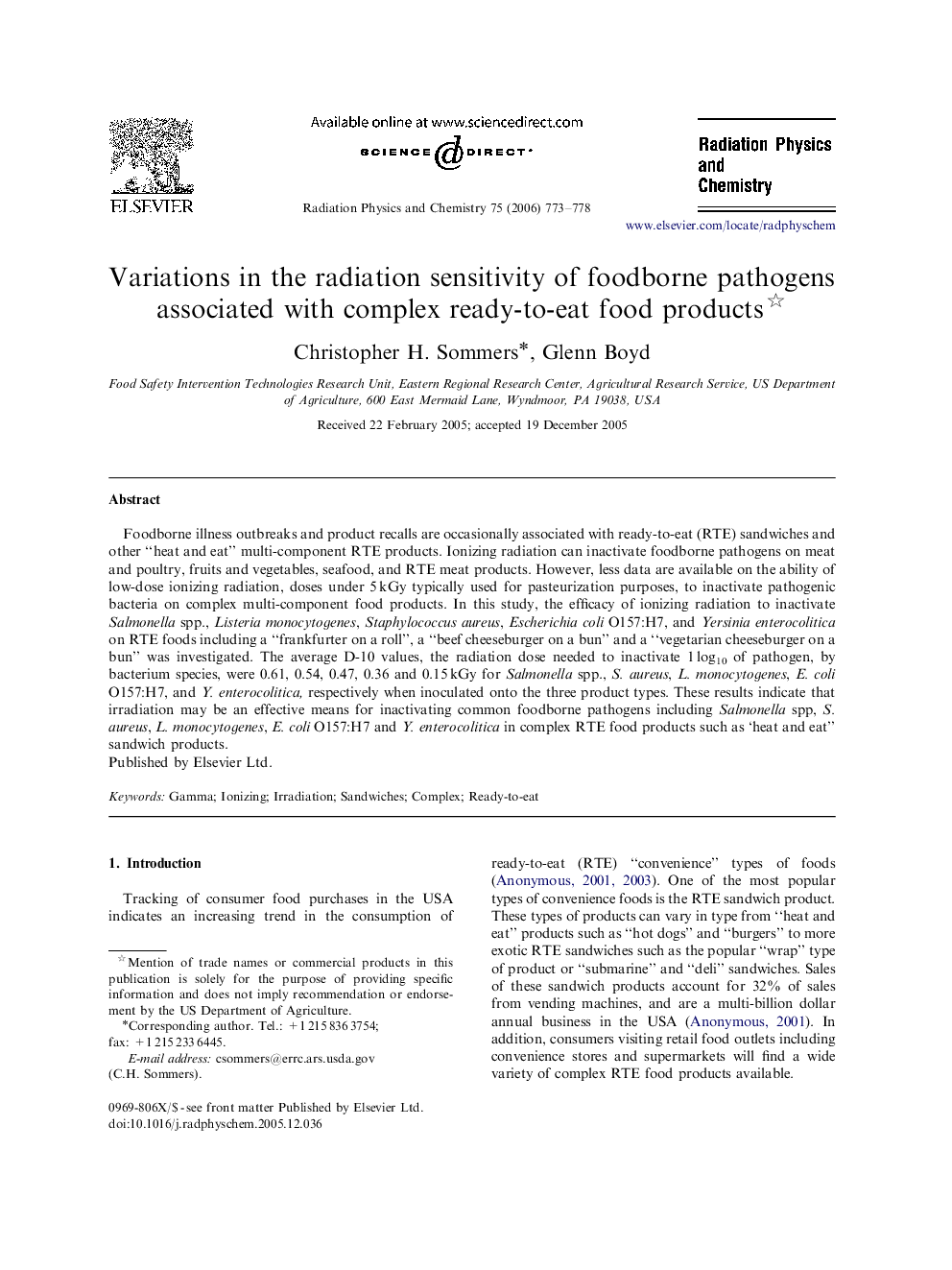| کد مقاله | کد نشریه | سال انتشار | مقاله انگلیسی | نسخه تمام متن |
|---|---|---|---|---|
| 1887141 | 1043574 | 2006 | 6 صفحه PDF | دانلود رایگان |

Foodborne illness outbreaks and product recalls are occasionally associated with ready-to-eat (RTE) sandwiches and other “heat and eat” multi-component RTE products. Ionizing radiation can inactivate foodborne pathogens on meat and poultry, fruits and vegetables, seafood, and RTE meat products. However, less data are available on the ability of low-dose ionizing radiation, doses under 5 kGy typically used for pasteurization purposes, to inactivate pathogenic bacteria on complex multi-component food products. In this study, the efficacy of ionizing radiation to inactivate Salmonella spp., Listeria monocytogenes, Staphylococcus aureus, Escherichia coli O157:H7, and Yersinia enterocolitica on RTE foods including a “frankfurter on a roll”, a “beef cheeseburger on a bun” and a “vegetarian cheeseburger on a bun” was investigated. The average D-10 values, the radiation dose needed to inactivate 1 log10 of pathogen, by bacterium species, were 0.61, 0.54, 0.47, 0.36 and 0.15 kGy for Salmonella spp., S. aureus, L. monocytogenes, E. coli O157:H7, and Y. enterocolitica, respectively when inoculated onto the three product types. These results indicate that irradiation may be an effective means for inactivating common foodborne pathogens including Salmonella spp, S. aureus, L. monocytogenes, E. coli O157:H7 and Y. enterocolitica in complex RTE food products such as ‘heat and eat” sandwich products.
Journal: Radiation Physics and Chemistry - Volume 75, Issue 7, July 2006, Pages 773–778